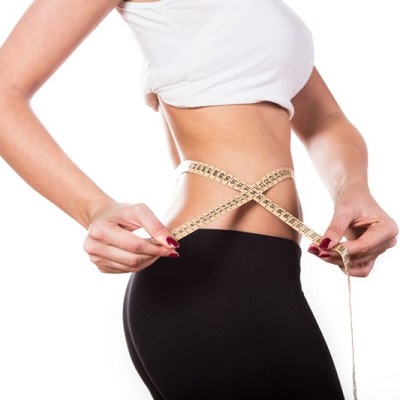
Fat transfer surgery has gained immense popularity in recent years as a natural and effective way to enhance body contours. Whether you’re considering a fat transfer to the face, breasts, buttocks, or hands, this procedure offers long-lasting results using your body’s own fat. If you’re searching for fat transfer surgery in Fat Transfer Surgery Clinic in Oman, you’re likely curious about the cost and factors influencing the price. Understanding the financial aspects is crucial before making a decision, so let’s break it down in detail.
What is Fat Transfer Surgery?
Fat transfer, also known as fat grafting or lipofilling, is a cosmetic procedure that involves harvesting fat from one part of the body and injecting it into another area to improve volume and contour. The process includes liposuction, fat purification, and reinjection into the desired region.
This procedure is widely chosen for:
- Facial rejuvenation – Restores lost volume to cheeks, under-eyes, and lips.
- Breast enhancement – Offers a natural alternative to implants.
- Buttock augmentation – Also called the Brazilian Butt Lift (BBL) for a fuller, curvier shape.
- Hand rejuvenation – Reduces signs of aging by restoring plumpness.
For those considering fat transfer surgery in Oman, it’s essential to understand how pricing works and what factors influence it.
Factors Affecting Fat Transfer Surgery Cost
The cost of fat transfer surgery varies due to several reasons. Here’s a breakdown of the main elements that impact pricing:
1. Treated Area
Different body parts require varying amounts of fat, which affects the overall cost. For instance:
- Facial fat transfer – Requires minimal fat and is generally more affordable.
- Breast and buttocks augmentation – Needs larger fat volumes, increasing the price.
2. Amount of Fat Needed
The more fat required, the more extensive the procedure becomes. If multiple liposuction sites are involved, costs can rise due to additional surgical time and expertise.
3. Liposuction Procedure Complexity
Since fat transfer surgery involves liposuction, the complexity of fat removal plays a significant role in cost determination. Advanced techniques like VASER liposuction or laser-assisted liposuction might be used, adding to the expense.
4. Surgeon’s Expertise and Qualifications
A board-certified plastic surgeon with extensive experience in fat transfer surgery in Oman will charge higher fees than a less experienced practitioner. Choosing a skilled surgeon ensures better results and lower risk.
5. Hospital or Clinic Facilities
Well-equipped clinics with advanced technology and high standards will have higher fees. Factors like operation room charges, anesthesia, and post-surgical care also add to the cost.
6. Anesthesia Type
Fat transfer procedures can be done under local or general anesthesia, depending on the treated area. General anesthesia is more expensive due to additional medical staff and resources.
Benefits of Fat Transfer Surgery
Opting for fat transfer surgery comes with several advantages:
- Natural results – Uses your own fat, minimizing rejection risks.
- Dual benefit – Removes unwanted fat from donor areas while enhancing another region.
- Long-lasting outcomes – Properly injected fat can last for years.
- Minimal scarring – Tiny incisions make scarring barely visible.
What to Expect During the Procedure?
A typical fat transfer surgery follows these steps:
- Liposuction – Fat is extracted from areas like the abdomen, thighs, or flanks.
- Purification – The harvested fat is processed to remove excess fluids and impurities.
- Reinjection – The purified fat is carefully injected into the target area for volume enhancement.
Recovery & Aftercare
The recovery time depends on the treated area and the amount of fat transferred. Here’s what to expect:
- Swelling & bruising – Common but subsides within 2-3 weeks.
- Compression garments – Required for areas where liposuction was performed.
- Limited physical activity – Avoid strenuous exercise for at least 4-6 weeks.
- Follow-up visits – Regular check-ups to monitor healing and fat retention.
Is Fat Transfer Surgery Worth the Cost?
If you’re considering fat transfer surgery in Oman, evaluating the cost in relation to benefits is crucial. Many patients find the procedure worthwhile due to its natural-looking results and dual sculpting effect. Since the fat is sourced from your body, there’s no risk of allergic reactions, making it a safe alternative to implants or fillers.
How to Choose the Right Clinic for Fat Transfer Surgery in Oman?
Selecting the right clinic is vital to achieving the best results. Here’s what to look for:
- Certified & experienced surgeons – Check qualifications and expertise.
- Advanced technology & safety standards – Ensure the clinic follows international protocols.
- Before & after photos – Reviewing past results helps assess quality.
- Patient reviews & testimonials – Insights from previous clients give a better idea of expectations.
Final Thoughts
The cost of fat transfer surgery in Oman depends on multiple factors, including the treated area, surgeon’s expertise, and clinic facilities. While prices may vary, investing in a skilled professional ensures safe and satisfying results. If you’re looking for a natural, long-lasting way to enhance your body, fat transfer surgery is an excellent option. Consult with a trusted clinic to get a personalized assessment and detailed cost breakdown.